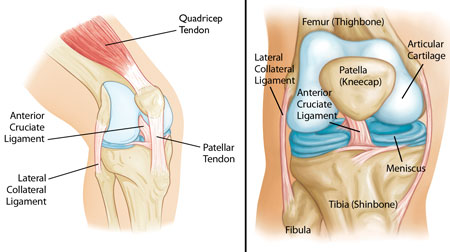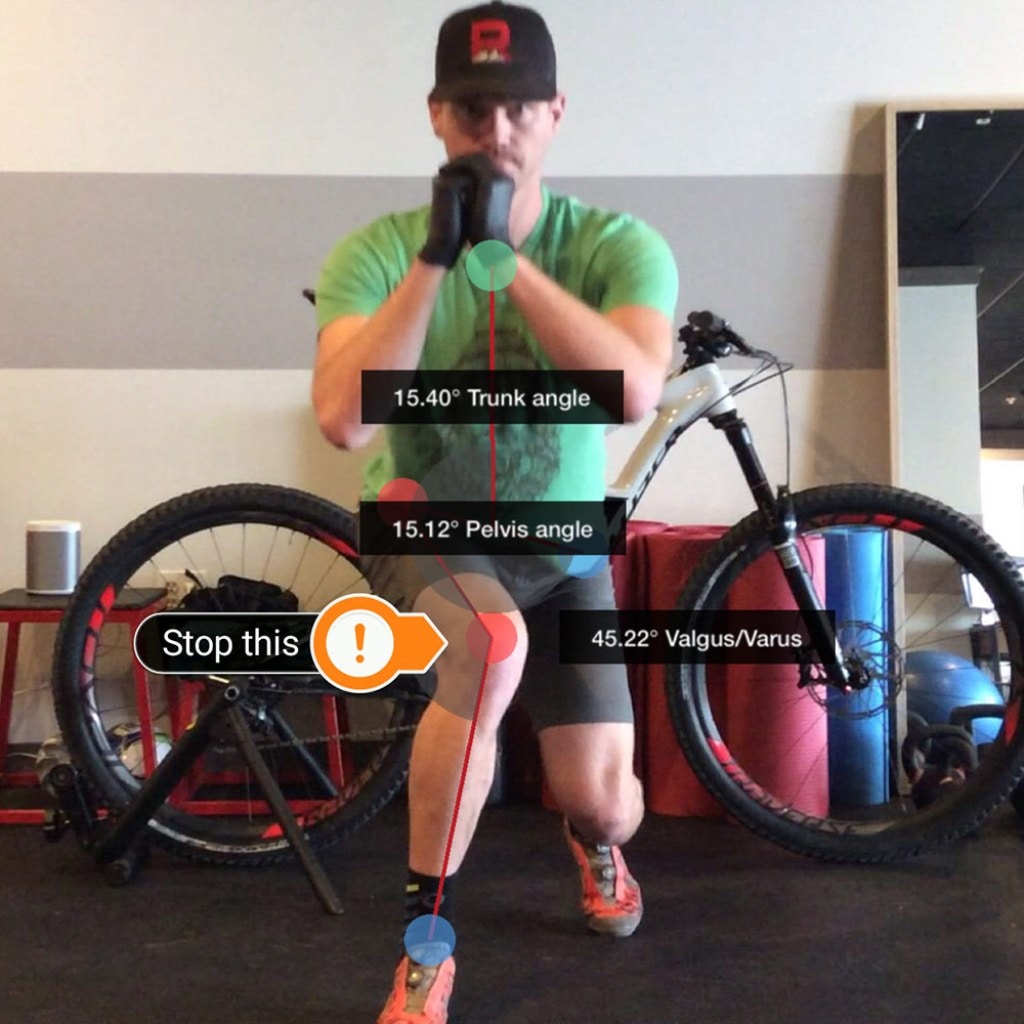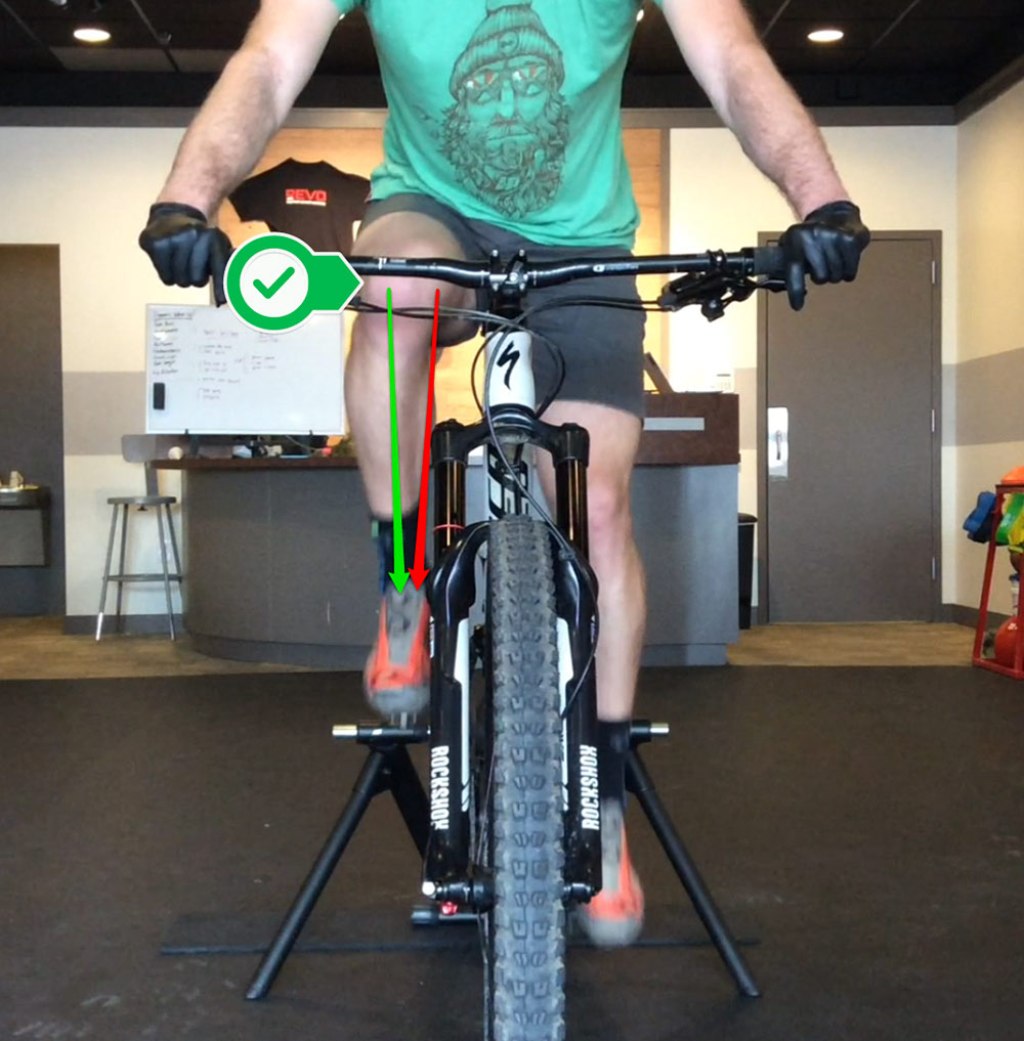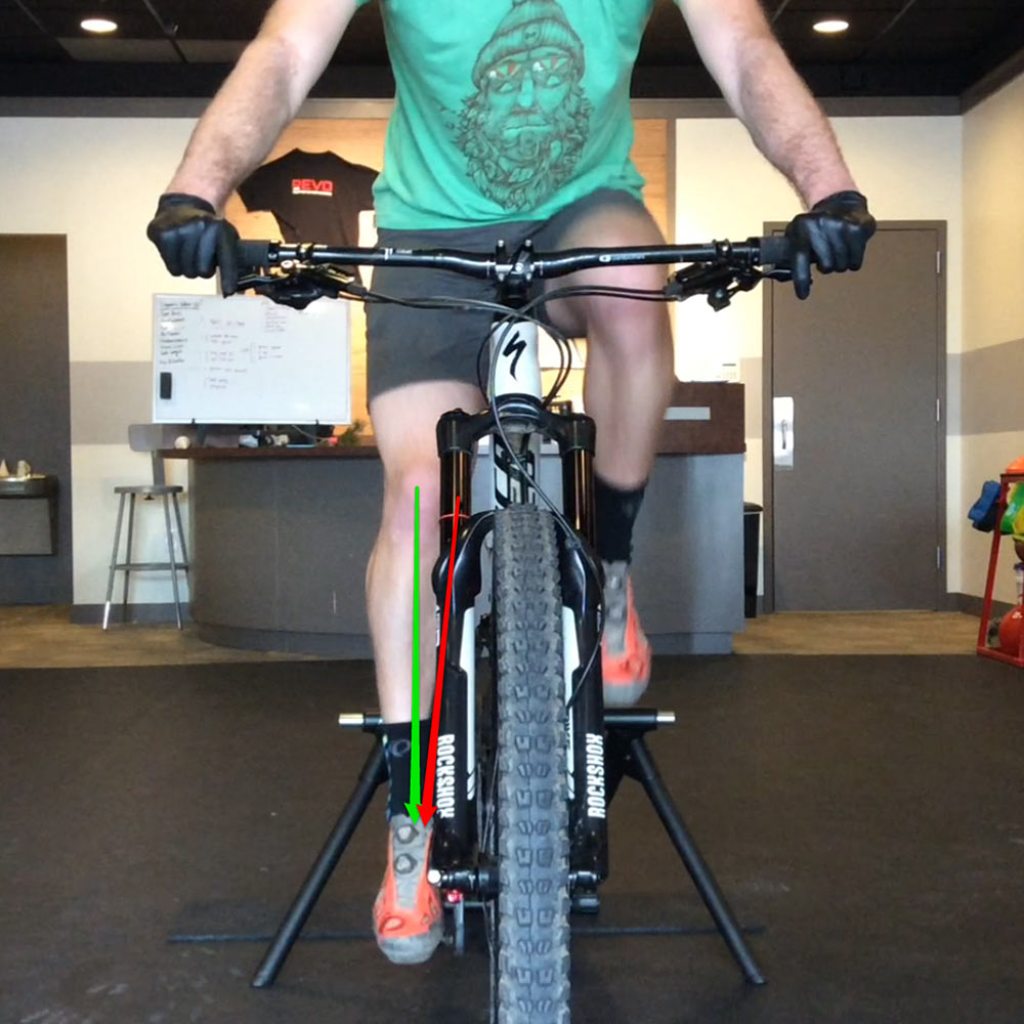With sloppy form, it’s no surprise that tens of thousands of pedal strokes can lead to achy knees.
At RevoPT, the most common location of cycling-related pain that we see is the anterior knee (AKA the front). Obviously, your knees see quite a bit of action over the course of a ride, so small movement faults can turn into major pains quickly. Before getting too technical, here’s a look inside the knee, which is comprised of three bony structures:
- The femur, which creates the top section of the knee
- The tibia, which creates the bottom section
- The patella, or knee cap, which acts as a lever for the quad muscle on the front of the knee

Credit: orthoinfo.aaos.org
Assess Your Body’s Movement Strategies
In order to track down the root cause of your pain, you’ll need to assess your own movement. To do this, start by performing a squat or a lunge in front of the mirror. These exercises give you a lot of information about your default movement strategies and how you load your lower extremity.
In the case of anterior knee pain (again, pain in the front of the knee), pay special attention to how you’re loading the knee joint as you get deeper into the lunge and/or squat. The movement we associate most with anterior knee pain is termed “dynamic valgus,” which is characterized by a medial collapse at the knee as you move into deeper flexion. In layman’s terms, this is when your knee buckles inwards as you load and bend it.

Notice the internal rotation required to allow this motion. No good!
The knee valgus seen above in a split squat/lunge will usually show itself on the bike as well. If you’re consistently knocking into your top tube or you notice your knees drifting inward at the bottom of the pedal stroke, you’re likely stressing the front of your knee excessively.
As your femur internally rotates, its condyles (the bulges at the end near the joint) also rotate. This makes the contact patch between the patella and the groove of the femur smaller, and less surface area means a spike in pressure. Do that 10,000 times a ride and you’re going to have some pain at the front of your knee!
Ideally, we want to see the knee stacked directly above the ankle throughout the pedal stroke.

Notice my knee stacked over my ankle and pedal… Nice!

At the bottom of the stroke, my knee is still stacked over my ankle and pedal… Also nice!
Strengthen Key Muscles with These Exercises
So, you know the front of your knees often ache after riding and you did a lunge in the mirror to confirm that your knee is collapsing inward. This inward collapse is caused because your hip’s external rotators and abductors are not doing their respective jobs. So what’s a mountain biker to do?
Turn them on!
The following exercises will activate the gluteus maximus and gluteus medius, giving you the strength needed to maintain proper form in the saddle. Start with 30-second holds followed immediately by 30 repetitions. If you feel a small fire on the back of your hip, you’re doing it right! You should also give this a try right before you get on the bike to “prime” your glutes and ensure that they’re ready to work.
1. Fire Hydrant
2. Skaters
This article was originally published on the REVO blog.
